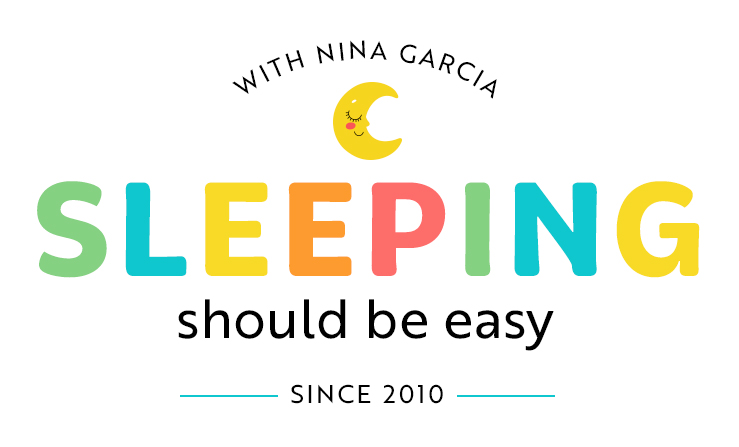For Work Life Balance, Try These Flexible Work Arrangements
Looking for flexibility as a working mom? Check out these different types of flexible work arrangements for better work-life balance.
 Ask most moms what makes them happy with their decision to work or not, and you’ll find a common factor. Surprisingly, it’s not whether they work (“I love contributing in ways other than being a mom”) or not (“I love being with my kids during the day”).
Ask most moms what makes them happy with their decision to work or not, and you’ll find a common factor. Surprisingly, it’s not whether they work (“I love contributing in ways other than being a mom”) or not (“I love being with my kids during the day”).
It’s something else.
Let’s backtrack to several years ago when I debated returning to the workforce. I use the term “debated” lightly, since my husband and I relied on both our incomes, so there really wasn’t much to debate.
Still, I wondered if there was a chance I could still work, but not necessarily with my old 9-to-5 schedule. I wanted to spend time with my baby so I wouldn’t feel terrible for missing out. But I also needed to earn income (and wanted to keep working as well).
So, my boss and I came up with a work arrangement that included working from home and reduced hours.
The difference was noticeable. I was able to both be with my son and at work without feeling overloaded from either camp. And it boiled down to that common factor I mentioned in the beginning. The common thread that usually determines whether a parent is happy, working or not. It’s this:
Flexibility.
We feel better equipped to balance work and life when we have greater flexibility to accommodate both. One of the best ways to find that balance is through flexible work arrangements.
So, what exactly are some types of flexible work arrangements?
I’m only familiar with your typical 9-to-5 office environment, and these ideas reflect that. I realize that not all jobs are conducive to flex time, or that you may find even more flexibility based on what you do.
That said, for the standard Monday-to-Friday, 9-to-5 folks, take a look at some of these hybrid work ideas you can try. These allow you to work, whether full- or part-time, and still be with your kids. Hopefully, you can find one that works for you:
Table of Contents
1. Work part time
One simple way to both work and be with your kids is to work part time. Take a look at your income needs—you might be able to work less and still earn the money you need.
Part-time doesn’t have to literally mean half the number of hours you currently work. Sure, you could reduce your hours all the way to 20, or, like me, by just one full workday. Rather than working 40 hours, my time added up to 32 hours over the work week.
Some other examples of part time work include:
- Working half day every day (from 8am to 12pm)
- Leaving every day a few hours earlier (from 9am to 3pm)
- Arriving to work a few hours later every day (from 11am to 5pm)
- Job share with another part-time employee
Free resource: Feeling stuck in motherhood and want to enjoy raising your kids again? Sign up for the Motherhood Motivation 5-Day Challenge! You’ll get one actionable tip a day that can make you think (and act) about motherhood differently. You’ll also get my newsletters, which parents say they LOVE:
“I’m really happy I found your blog. It has been really helpful, especially the five day challenge as it seems to come just when I need to hear it. For that, I truly thank you from the bottom of my heart.” -Jessica-Lyn Horne
2. Work from home
When you work remotely, you’re doing the work you’d do in the office but from home. Since the pandemic, many of us have experienced remote work in one way or another. This has paved the way for companies and organizations to accommodate work-from-home situations.
Working from home allows you to attend school functions, run errands, and handle surprises (like when the faucet is leaking and you have to call the plumber). You’ll also save time by reducing the hours you would normally commute.
Some other examples include working from home…
- In the evenings: Let’s say you need to leave work by 4pm to pick up your child from daycare. You can wrap up work at the office by 4pm, pick up your child, and then finish your work in the evenings after he’s in bed.
- One day (or more) a week: You could come into the office Mondays, Wednesdays, and Fridays, and work from home on Tuesdays and Thursdays.
- Work from home completely. Depending on your work, you can request an arrangement that allows you to work remotely 100%.
Get more tips about how to work from home with a baby.

3. Shift your schedule earlier or later
Many people—parents or not—have a shifted schedule to avoid traffic. You can work either earlier in the morning so you can leave early in the afternoon, or come in and work later as well.
When I worked in an office, I would arrive early in the morning and leave by mid-afternoon. This allowed me to pick up my kids from school. You’d need to coordinate with someone, in my case my husband, to handle mornings.
Some parents might even have a “graveyard shift” type of job, where your work needs you at odd hours (hospital staff, for instance).
If so, you can tag-team with your partner or another adult so that you’re with the kids during the day. Then, while you’re working at night—say, 4pm to midnight—they can be with another adult.
4. Work four 10-hour days
One way to enjoy a day off while still being a full-time employee is to condense your 40 hours in four days. For instance, you could work Mondays through Thursdays, from 7am to 5pm, and get Fridays completely off.
Your days would be longer with a compressed workweek. But you’d have one day a week besides the weekends all to yourself, while still earning your same income.
5. Freelance or consult
One big change you can make is to go from being an employee to freelancing or consulting. You could freelance for your current company, or find clients.
You’d no longer be an employee, so you would lose the benefits you received from your company. But as a freelancer, you can work your own hours on your own time.
As Annie Ridout writes on Forbes:
“Self-employment often enables the mother to spend more time with her children, do the nursery or school drop-offs and pick-ups, while continuing to earn and enjoy the mental stimulation that paid work hopefully offers. She can develop her career and keep a foot in the workplace.”
6. Have your own business
Lastly, one possibility for working while still being with your family is to have your own business. I took this leap seven years ago and never looked back. I’ve been able to earn income while being home with my kids after school.
That said, some small businesses can still require more of your time than a typical 9-to-5 job. But as the person who owns the business, you can set your own hours than if you worked for someone else.
So, even if you’re not able to be with the kids every day after school, you still have the autonomy to take time off every week to volunteer in the classroom, for instance.
Of course, this isn’t something you do overnight, but it can still be a possibility at some point in your career.
Conclusion
Being able to work a flexible arrangement has allowed me and many parents to earn income while still being with their kids. And it’s this flexibility that gives us more fulfillment, well-being, and job satisfaction than feeling pulled from either side.
Thankfully, there are many options you can consider. You can reduce your hours by working part time or job sharing with another employee. Work from home, whether for a few days or completely. Shift your schedule earlier or later, or consolidate your work hours to four days.
You might consider freelancing or consulting, or even starting your own business, allowing you to set your own hours.
I’ve since learned that it’s not just about working or being a stay-at-home mom, but the flexibility that allows us to experience a bit of both.
Get more tips:
- How to Spend Time with the Baby When You Work Long Hours
- When You’re Depressed About Going Back to Work After Maternity Leave
- Bring Your Child to Work Day Activities and Action Plan
Don’t forget: Join my newsletter and sign up for the Motherhood Motivation 5-Day Challenge below—at no cost to you:

